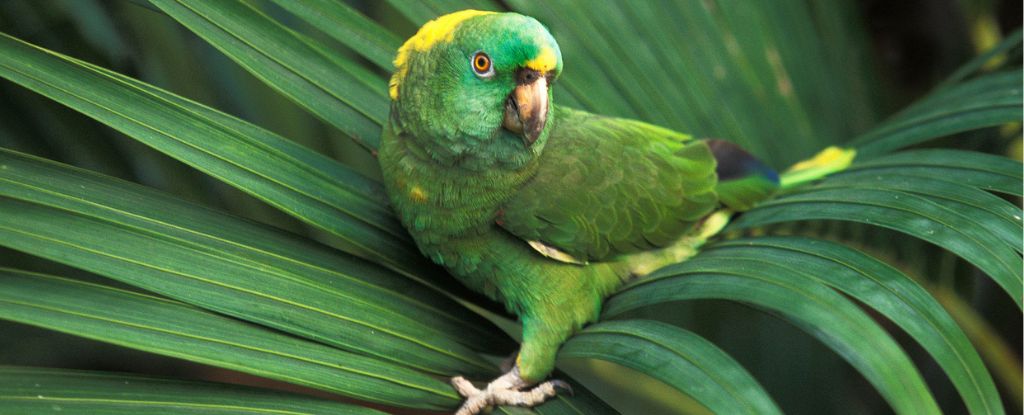Some parrots in the Amazon no longer sound like they used to when they call out to each other through the trees.
Scientists studying the yellow-naped amazon (Amazona auropalliata) have noticed in the last few decades that these Pacific coast parrots are changing their ‘accents’. While it could interfere with mating and reproduction, the researchers speculate it might actually be a positive sign of the birds adapting.
Like many other birds, yellow-naped parrots are known to have regional dialects. This means that different communities shriek, whistle, and screech in slightly different ways, depending on where they live.
Scientists have noticed this about the species since 1994, but between 2005 and 2016, researchers from New Mexico State University and the University of Pittsburgh (UPJ) at Johnstown have noticed a significant geographic shift.
The types of calls these parrots are making in different regions seem to be bleeding into one another.
Some calls that were recently heard in the north region, for instance, had only previously been heard in the south. In fact, some birds in the north were capable of producing both accents, researchers found, what they call a ‘bilingual’ skill.
This could possibly give the parrots a survival advantage. Birds that can communicate with more groups may be able to share more information, access foraging areas, or gain roosting privileges.
And that may be more important now than ever.
In the last three generations alone, the yellow-naped parrot has lost more than 92 percent of its population in Central and South America, mostly due to habitat loss and poaching for illegal wildlife trade.
The fact that these widespread changes coincide with shifting accents may be no coincidence.
“The observed cultural changes may represent adaptive responses to changing group sizes and patterns of social association,” write the authors of the study.
The findings have broad implications for threatened species right around the world.
Vocal dialects are a common example of animal culture – heard among songbirds, parrots, bats, and cetaceans.
Like human accents, these dialects can reveal where animals come from, and their use may promote social cohesion and bonding.
“Given the key roles that vocal dialects may play in animal social systems, research into cultural evolution in the face of anthropogenic change is warranted,” write biologist Christine Dahlin, from UPJ, and her colleagues.
In Australia, for instance, one type of songbird, called the regent honeyeater, is so very critically endangered that not enough individuals in its population exist to teach its song to the next generation. As a result, many wild birds are singing ‘weird’ songs, some of which don’t even belong to their species.
Yellow-naped parrots still sound like themselves, but the migration of the species’ southern accent to the north suggests that some acoustic patterns are on the move.
Since the 1990s, yellow-naped amazons have displayed three distinct vocal dialects. One in the north, one in the south, and one in Nicaragua.
A survey in 2005 found the integrity of these accents had remained intact for over a decade, sounding like this;
But then something seemed to have changed. They began to sound more like this;
By a third survey in 2016, the population of yellow-naped amazons in Costa Rica had plummeted by more than half, probably caused by nest poaching, habitat loss, and fragmentation.
While researchers observed long-term persistence of the north and south dialects, the team also documented four new call variants, a large increase in bilingual sites and birds, and a shift in the geographic range of the three traditional dialects.
The rise of new acoustic variants was especially evident in the south. The greater distance between roosting sites in this region could have inhibited movement and promoted cultural drift, researchers explain.
In the north, on the other hand, where roosting sites are denser, parrots may have learned to vocalize from a wider variety of neighboring birds, allowing accents to spread and catch on.
“Some of this change could be disruptive, with the potential to further exacerbate population declines. However, an increase in bilingual sites could also be a sign of adaptability,” the researchers conclude.
“Ultimately, monitoring cultural behaviors, such as the rate of change in dialects, can help wildlife managers understand anthropogenic impacts, population dynamics and conserve species.”
The study was published in the Proceedings of the Royal Society B.





